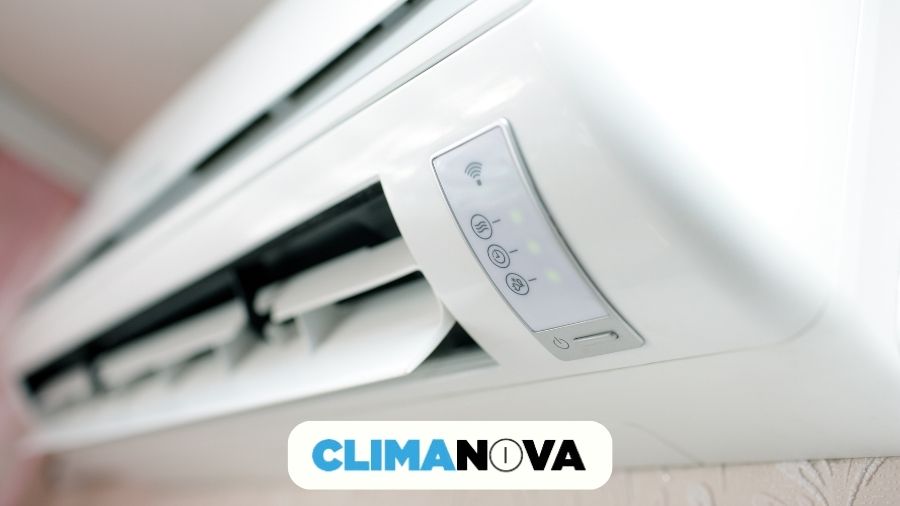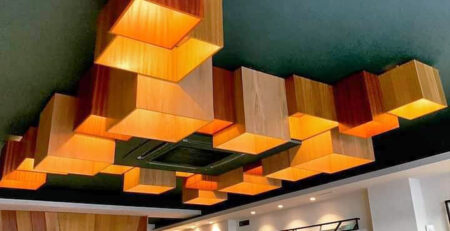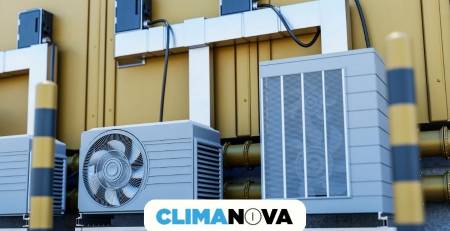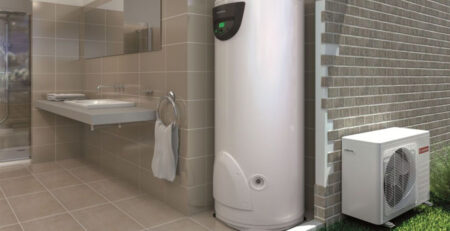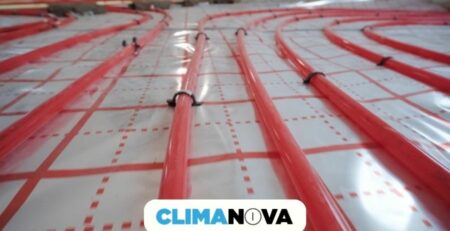Since the new European regulations on energy efficiency came into force, air source heat pump heating has become one of the most popular heating systems, due to its renewable nature. We explain what fan convector heating is and its advantages.
Air source heat pump heating is highly efficient with a considerable reduction in energy consumption compared to other types of systems.
What is a fan coil unit?
A fan coil or fan convector is a device used in residential, commercial and industrial air conditioning. Basically it has a coil or heat or cold exchanger and a fan.
The fan coil belongs to the water-air air conditioning systems, i.e. these devices can generate cold air or heat depending on whether it is fed with chilled water or hot water.
What is the difference between a fan coil and a split air conditioner?
The main difference between the two is that the fan coil is a water-air unit, where the water circulates through the pipes as a refrigerant. That is to say, the fancoil does not produce the cold or heat, but receives it from the water.
The split unit, on the other hand, is an air-to-air system in which refrigerant gas circulates in the pipes and operates a pressurised cooling system, which produces its own heat or cold.
Fan convectors have a very compact design and therefore do not take up too much space.
How does fan convector heating work?
This is the process that this system follows in order to provide hot or cold air in the room:
- Depending on the desired temperature, hot or cold water starts to circulate through the pipes of the fan coil.
- The air from the room enters the unit and a fan blows it through the pipes or coils through which the water circulates.
- A temperature transfer (thermotransfer) is produced, from water to air, i.e., for example, if the air enters hot and the pipes are cold, the air is cooled, and vice versa.
- Once the selected temperature is reached, it is expelled back into the room.
As you can see, fan coil operation is very simple.
Advantages offered by fan convector air source heat pump
The main advantages of fan coil or fan coil systems are as follows:
- Highly efficient: They are one of the most efficient systems in air conditioning.
- Wide range of power ratings: to adapt to different needs.
- Modular design for any type of room: for both residential and commercial applications.
- Optimal air distribution: This makes them ideal for large spaces.
- Silent system: Avoids noise pollution that can disturb neighbours.
- Easy installation: they are flexible and versatile devices that require little space.
- Compatibility with centralised control systems: for easy and efficient management.
Types of fan coil according to their location
There are several types of fan coils depending on their location:
- Floor fan coil: This is normally used in homes, in order to take advantage of the pipe network of traditional radiators. Nowadays, there are more efficient and ultra-slim models, taking up less space to achieve visual harmony.
- Wall-mounted: They are placed at the top of the wall like a split radiator.
- Ceiling: They are placed anchored to the ceiling or even in false ceilings to hide them better. In the case that it is in sight, it has a casing, which provides protection at the same time as it is more aesthetically pleasing.
- Ducted: They have a network of ducts hidden in the false ceiling. They are usually installed in newly built homes or premises, as it is necessary to carry out building work to install the ducts in the ceiling.
- Cassette: These are mainly found in commercial premises. This system provides air conditioning from the top downwards and in all directions in a very efficient way.
What is NOT a fan coil? Don’t make these mistakes
Estos son algunos errores comunes a la hora de hablar sobre fan coils:
- Fan coil is not the same as a ducted indoor unit: It is a common mistake to call fan coil to any air conditioning equipment to be connected to ducts.
- It is not true that only water-air terminal units that are ducted are called fan-coils, regardless of the shape of the equipment, if it is water-air, it is a fan-coil, whether it is a cassette, ceiling, floor, etc.
- Indoor units of VRF systems are simply called indoor units, not fan-coils.
Aspects to take into account when choosing fan convector fan heaters
Choosing a fan coil is not easy, as it depends on the characteristics of each one and the customer’s own needs. For this reason, we highlight some aspects to take into account before purchasing:
- Power: The amount of hot or cold air that the fancoil can renew.
- Modulation: Some fan convectors work by modulating the power to regulate consumption, instead of switching on and off.
- Noise level: If we want to remain comfortable at home or in the office, we must select a fancoil that emits the least noise.
- Consumption: Depending on the power, motor and modulation capacity.
- Energy efficiency: the higher the efficiency, the greater the savings in the long term.
Honestly, the most advisable thing to do is to contact an expert to choose the right power, as well as the rest of the characteristics to match your real needs. At the price of electricity, we don’t want any surprises later on in the bill!
If you need help from a professional to advise you on air conditioning systems and fan coil installation, contact Climanova Marbella.
